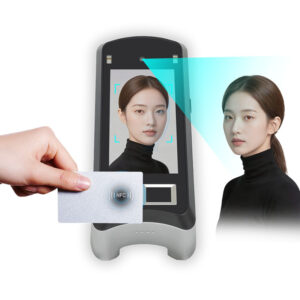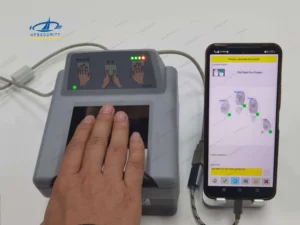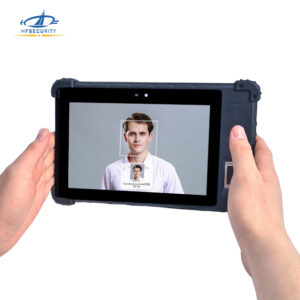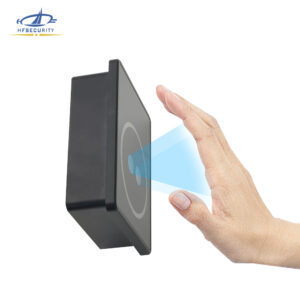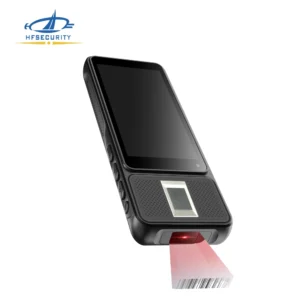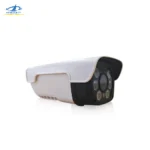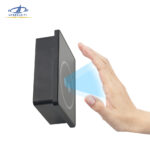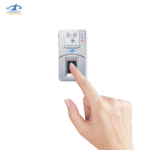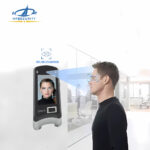Biometric Device Definition
A biometric device is an electronic system designed to identify and authenticate individuals based on their unique biological or behavioral characteristics. These characteristics, known as biometric identifiers, can include fingerprints, facial features, iris patterns, voice, or even vein patterns in the hand.
The biometric device definition also encompasses the technology and processes used to capture, store, and match these identifiers against a secure database. Because biometric traits are unique to each individual, these devices provide a much higher level of security compared to traditional methods such as passwords or PIN codes.
How Biometric Devices Work
Biometric devices are advanced security tools that identify individuals based on their unique physical or behavioral traits, such as fingerprints, facial features, iris patterns, or palm veins. Here’s how they work:
1.Data Capture
The biometric device scans the user’s unique trait using specialized sensors or cameras. For example, a fingerprint scanner captures ridge patterns, while facial recognition devices use AI to map facial geometry.
2.Data Conversion
The captured biometric image or pattern is converted into a digital template using advanced algorithms. This template contains unique data points that represent the biometric feature, not the raw image, ensuring privacy.
3.Secure Data Storage
The digital template is stored in a secure database or locally on the device. Modern biometric systems use encryption protocols to protect the data from unauthorized access, ensuring compliance with GDPR, HIPAA, or other privacy regulations.
4.Matching & Verification
When authentication is requested, the biometric device captures a new scan and compares it with the stored template. If the match score meets the security threshold, the user is granted access.
5.Result & Access Control
Once verified, the biometric device sends an authentication signal to the access control system, attendance tracking software, or secure database—allowing entry or confirming identity instantly.
Types of Biometric Devices
1. Fingerprint Recognition Devices
Fingerprint recognition devices capture the unique ridge and valley patterns on a person’s fingertips using optical, capacitive, or ultrasonic fingerprint scanners. The device then converts these patterns into a digital template and compares them against stored records for identity verification. Commonly used in access control systems, time attendance devices, and mobile biometric tablets, fingerprint recognition offers high accuracy, quick processing, and strong security.
2. Facial Recognition Devices
Facial recognition devices use high-resolution cameras and AI-based image processing to map key facial features such as the distance between the eyes, nose shape, and jawline contour. The captured image is transformed into a unique facial signature for comparison with stored templates. These devices are widely deployed in airport security, smart building access, and mobile authentication, offering touchless, fast, and convenient verification.
3. Iris Recognition Devices
Iris recognition devices scan the intricate patterns of the colored ring surrounding the pupil using near-infrared light for maximum detail and accuracy. Since the iris pattern remains stable over a lifetime, this method is considered one of the most secure biometric technologies. It is often used in border control, banking security, and national ID programs for high-assurance identity verification.
4. Palm Vein Recognition Devices
Palm vein recognition devices use near-infrared (NIR) imaging technology to detect the unique vein structure beneath the skin of a user’s hand. As vein patterns are internal and invisible to the naked eye, they are extremely difficult to forge, making palm vein recognition a high-security, contactless biometric solution. These devices are commonly implemented in healthcare security systems, financial institutions, and high-security facility access control.
5.QR Code Recognition Devices
QR code recognition devices use high-speed optical scanners or camera modules to read and decode Quick Response (QR) codes displayed on printed materials or mobile screens. Once scanned, the device verifies the embedded information—such as user credentials, ticket details, or access permissions—against a secure database.
This technology is widely used in access control systems, event check-ins, payment authentication, and visitor management solutions. Many modern facial recognition terminals and fingerprint recognition tablets integrate QR code recognition as an additional authentication method, providing multi-factor verification for enhanced security.
Applications of Biometric Devices
The biometric device definition extends to a variety of real-world applications where secure, accurate, and convenient identity verification is essential. Here are some of the most common use cases:
1. Access Control
Biometric devices are widely used to secure doors, gates, turnstiles, and restricted areas in offices, airports, factories, and government buildings. By replacing traditional keys or access cards with fingerprint scanners, facial recognition terminals, or palm vein readers, organizations can prevent unauthorized entry and ensure that only verified individuals can access sensitive locations.
2. Time Attendance
Instead of manual attendance sheets or swipe cards, biometric time attendance devices authenticate employees through fingerprints, facial recognition, or iris scans. This eliminates buddy punching (where one employee clocks in for another), improves accuracy in payroll processing, and provides real-time attendance records integrated with HR and workforce management software.
3. Financial Transactions
In banking and payment systems, biometric devices provide an additional layer of security and fraud prevention. For example, fingerprint recognition tablets or voice authentication systems can authorize mobile payments, ATM withdrawals, loan applications, and online banking logins without the need for passwords or PINs, ensuring a faster and more secure customer experience.
4. Healthcare Security
Hospitals and clinics use biometric devices to protect patient records, insurance details, and medical histories from unauthorized access. For example, iris recognition or palm vein scanners can verify the identity of doctors, nurses, and patients before granting access to sensitive systems or treatment areas—ensuring compliance with privacy laws like HIPAA.
5. Border Control & Law Enforcement
At airports, seaports, and land borders, biometric devices are used for passport authentication, immigration clearance, and visa verification. Law enforcement agencies also use mobile biometric devices to identify suspects, check criminal records, and confirm identities in the field. This improves operational efficiency, reduces identity fraud, and strengthens public safety measures.
Advantages of Using Biometric Devices
The growing popularity of biometric devices is driven by their ability to provide secure, efficient, and user-friendly identity verification across multiple industries. Here are some of the key advantages:
1. High Security
Biometric devices rely on unique biological traits such as fingerprints, facial features, iris patterns, palm veins, or voiceprints—characteristics that are extremely difficult to forge, steal, or duplicate. Unlike passwords or access cards, these traits cannot be easily shared or lost, making biometric devices one of the most reliable methods of preventing identity theft and unauthorized access.
2. Convenience
With biometric authentication, there’s no need to remember complex passwords or carry physical access cards. Users can simply present their fingerprint, face, or palm to a biometric device for instant verification. This convenience is especially valuable in high-traffic environments like airports, corporate offices, and healthcare facilities, where speed and ease of use are critical.
3. Accuracy
Modern biometric devices are powered by advanced AI algorithms and high-resolution sensors that ensure precise and consistent identification. Whether it’s matching a fingerprint pattern or analyzing facial geometry, these devices can achieve near-zero error rates, making them ideal for applications where accuracy is non-negotiable—such as border control, banking, and government security programs.
4. Efficiency
By automating the identity verification process, biometric devices significantly reduce waiting times in busy environments. For example, in access control systems, employees or visitors can pass through secure gates in seconds. In banking, customers can authenticate transactions instantly without filling out forms or providing physical IDs, resulting in faster service and improved user satisfaction.
Related products
Conclusion
The biometric device definition goes beyond simply identifying what the device is—it represents a technological revolution in how we protect assets, verify identities, and manage security. From government and finance to healthcare and corporate offices, biometric devices are redefining the way we interact with security systems.
If you’re looking for a secure, efficient, and user-friendly identity verification method, investing in a biometric device could be the best step forward for your organization.
Contact Us
We would love to speak with you.
Feel free to reach out using the below details.

